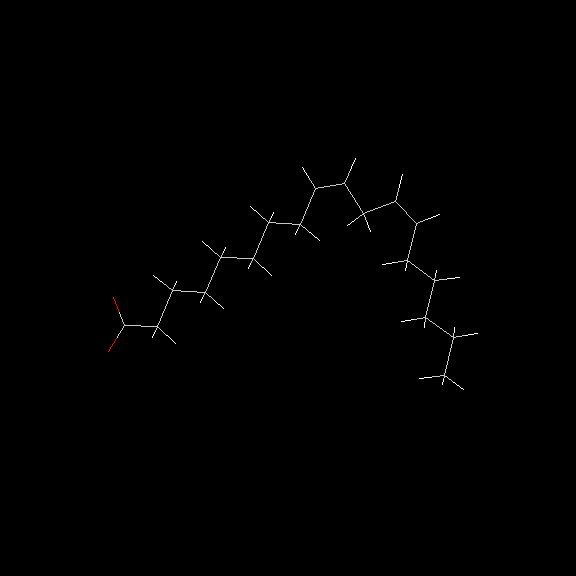Linoleate
Understanding Linoleic Acid: Structure, Properties, and Biological Significance
Linoleic acid, a polyunsaturated omega-6 fatty acid, corresponds to the all-cis-Δ9,12 C18:2 n-6 configuration. Its semi-developed formula is expressed as: H3C–(CH2)4–CH=CH–CH2–CH=CH–(CH2)7–COOH. Comprising 18 carbon atoms, it exhibits a carboxylic acid function and two unsaturations (double bonds), rendering the compound a colorless, liquid state.
Several stereoisomers of octadecadienoic acid can be distinguished; however, only the 9-cis, 12-cis octadecadienoic acid corresponds to linoleic acid. Its biochemical designation is 18:2(n-6), with the enumeration of double bonds occurring in the reverse direction of the chemical nomenclature. The melting point of this compound is -9 °C.
Additionally, linoleic acid is a crucial component of the human diet, serving as a precursor for various important compounds in the body, including arachidonic acid and prostaglandins. Its presence is necessary for maintaining healthy skin and hair, and it plays a role in the overall regulation of metabolism. Furthermore, linoleic acid has been implicated in numerous physiological processes, including immune response and inflammation regulation. As a result, its adequate intake is crucial for overall well-being and health.
Accession Number : KLM0000250 This work is released into the public domain; please see our release statement.
Doug Markham has contributed a molecular mechanics computation of the structure! See below for the details.

Synonyms :
- cis,cis-Delta-9,12-octadecadienoate
Config Rule :
% linoleate
config(linoleate,[
chain([
carboxyl(1),
num(methandiyl,7),
car(9,hyd)~~,
car(10,hyd),
methandiyl,
car(12,hyd)~~,
car(13,hyd),
num(methandiyl,4),
methyl]),
cis(car(8),car(11),bond(car(9),car(10))),
cis(car(11),car(14),bond(car(12),car(13)))]).
Smiles String :
[C@2H2]([C](=[O])[O-])[C@2H2][C@2H2][C@2H2][C@2H2][C@2H2][C@2H2]\[CH]=[CH]/[C@2_ H2]\[CH]=[CH]/[C@2H2][C@2H2][C@2H2][C@2H2][CH3] linoleate
Fischer Diagram :

Terminal :
% linoleate
c(1,12,(0,nonchiral))-[o(1,nil)?,c(2,right)~,o(2,nil)?],
c(2,12,(0,nonchiral))-[c(1,left)~,c(3,right)~,h(2,up)~,h(1,down)~],
c(3,12,(0,nonchiral))-[c(2,left)~,c(4,right)~,h(4,up)~,h(3,down)~],
c(4,12,(0,nonchiral))-[c(3,left)~,c(5,right)~,h(6,up)~,h(5,down)~],
c(5,12,(0,nonchiral))-[c(4,left)~,c(6,right)~,h(8,up)~,h(7,down)~],
c(6,12,(0,nonchiral))-[c(5,left)~,c(7,right)~,h(10,up)~,h(9,down)~],
c(7,12,(0,nonchiral))-[c(6,left)~,c(8,right)~,h(12,up)~,h(11,down)~],
c(8,12,(0,nonchiral))-[c(7,left)~,h(13,right)~,h(14,up)~,c(9,(down,isomeric(down)))~],
c(9,12,(0,nonchiral))-[h(15,(nil,isomeric(down)))~,c(8,(up,isomeric(up)))~,c(10,cis)~~],
c(10,12,(0,nonchiral))-[c(11,(right,isomeric(up)))~,h(16,(nil,isomeric(down)))~,c(9,cis)~~],
c(11,12,(0,nonchiral))-[c(10,(left,isomeric(down)))~,c(12,(right,isomeric(down)))~,h(18,up)~,h(17,down)~],
c(12,12,(0,nonchiral))-[c(11,(left,isomeric(up)))~,h(19,(nil,isomeric(down)))~,c(13,cis)~~],
c(13,12,(0,nonchiral))-[c(14,(right,isomeric(up)))~,h(20,(nil,isomeric(down)))~,c(12,cis)~~],
c(14,12,(0,nonchiral))-[c(13,(left,isomeric(down)))~,c(15,right)~,h(22,up)~,h(21,down)~],
c(15,12,(0,nonchiral))-[c(14,left)~,c(16,right)~,h(24,up)~,h(23,down)~],
c(16,12,(0,nonchiral))-[c(15,left)~,c(17,right)~,h(26,up)~,h(25,down)~],
c(17,12,(0,nonchiral))-[c(16,left)~,c(18,right)~,h(28,up)~,h(27,down)~],
c(18,12,(0,nonchiral))-[c(17,left)~,h(29,right)~,h(31,up)~,h(30,down)~],
h(1,1,(0,nonchiral))-[c(2,up)~],
h(2,1,(0,nonchiral))-[c(2,down)~],
h(3,1,(0,nonchiral))-[c(3,up)~],
h(4,1,(0,nonchiral))-[c(3,down)~],
h(5,1,(0,nonchiral))-[c(4,up)~],
h(6,1,(0,nonchiral))-[c(4,down)~],
h(7,1,(0,nonchiral))-[c(5,up)~],
h(8,1,(0,nonchiral))-[c(5,down)~],
h(9,1,(0,nonchiral))-[c(6,up)~],
h(10,1,(0,nonchiral))-[c(6,down)~],
h(11,1,(0,nonchiral))-[c(7,up)~],
h(12,1,(0,nonchiral))-[c(7,down)~],
h(13,1,(0,nonchiral))-[c(8,left)~],
h(14,1,(0,nonchiral))-[c(8,down)~],
h(15,1,(0,nonchiral))-[c(9,(nil,isomeric(up)))~],
h(16,1,(0,nonchiral))-[c(10,(nil,isomeric(up)))~],
h(17,1,(0,nonchiral))-[c(11,up)~],
h(18,1,(0,nonchiral))-[c(11,down)~],
h(19,1,(0,nonchiral))-[c(12,(nil,isomeric(up)))~],
h(20,1,(0,nonchiral))-[c(13,(nil,isomeric(up)))~],
h(21,1,(0,nonchiral))-[c(14,up)~],
h(22,1,(0,nonchiral))-[c(14,down)~],
h(23,1,(0,nonchiral))-[c(15,up)~],
h(24,1,(0,nonchiral))-[c(15,down)~],
h(25,1,(0,nonchiral))-[c(16,up)~],
h(26,1,(0,nonchiral))-[c(16,down)~],
h(27,1,(0,nonchiral))-[c(17,up)~],
h(28,1,(0,nonchiral))-[c(17,down)~],
h(29,1,(0,nonchiral))-[c(18,left)~],
h(30,1,(0,nonchiral))-[c(18,up)~],
h(31,1,(0,nonchiral))-[c(18,down)~],
o(1,16,(-5.0E-01,nonchiral))-[c(1,nil)?],
o(2,16,(-5.0E-01,nonchiral))-[c(1,nil)?]
The Terminals for all the Config Rules are in Prolog Definite Clause Grammar (DCG) form.They can be checked in the Manual here.
The compound's PDB file can be seen here.
Doug Markham of the Institute for Cancer Research, Fox Chase Cancer Center,Philadelphia, PA, has contributed the following structure for linoleate. He computed this structure in sdf format using MacroModel, a molecular mechanics program. We have used Babel to convert the .sdf format to PDB format. You'll find it interesting to compare these structures to those computed using CONCORD.
Many thanks Doug!
